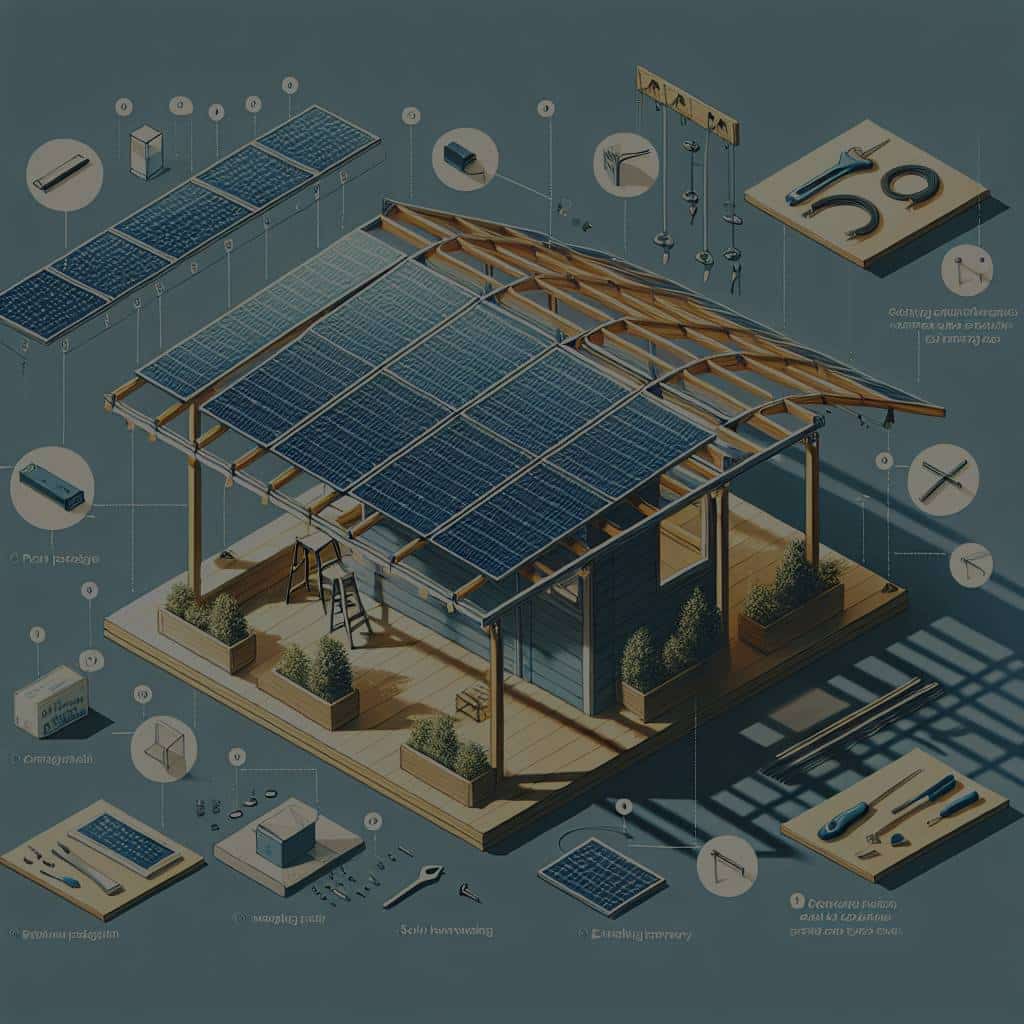What’s the Best Way to Construct a DIY Solar Panel Awning that Provides Shade and Generates Energy?

Widgets and gadgets that save energy and money have become increasingly popular over the years. Solar panels are undoubtedly at the top of the list. They are a practical and cost-effective solution, converting sunlight into electrical energy. One of the innovative ways to install these panels is using them as an awning, a canopy, or even as a carport. These installations not only provide shade but also generate power. You might want to try building your own DIY solar panel awning. But, what’s the best way to go about it?
Understanding the Concept of a Solar Panel Awning
Before diving into the construction process, it’s essential to comprehend the basic idea of a solar panel awning. Simply put, a solar awning is a structure, usually attached to a building, that utilizes solar panels instead of conventional fabric or metal. It serves a dual purpose by offering shade, and, at the same time, generating energy. The solar panels are mounted on a structure that can be a pergola, canopy, or even a carport.
In the same genre : What Are the Top 5 Antiques and Collectibles for Creating a Gallery Wall with Historical Significance?
The installation of a solar awning, much like an ordinary one, involves securing the structure to a wall and ensuring it has enough support to withstand various weather conditions. The only difference is that in this case, the ‘fabric’ of the canopy is replaced with solar panels.
Key Components of a Solar Panel Awning
To construct a DIY solar panel awning, one must understand the requisite components. The primary aspect is, of course, the solar panels. However, these panels form a part of an entire system, which includes:
In the same genre : Dormer vs mansard: which roof style fits your home?
- Solar Panels: The size and quantity of the panels will depend on the size of the awning and the amount of energy you wish to generate.
- Mounts: These will be used to attach the solar panels to the roof or structure.
- Inverter: This device will convert the direct current (DC) produced by the solar panels into alternating current (AC) that can power your home appliances.
- Battery: If you want your solar panel awning to store power for use when the sun isn’t shining, you’ll need a battery system.
- Charge Controller: It regulates the voltage and current coming from your solar panels and prevents battery overcharging.
Steps to Construct a DIY Solar Panel Awning
Now that we have the basic understanding and components required, let’s delve into the construction process. Here is the step-by-step guide to help you build your own solar panel awning.
1. Design the Structure
The first step is to design the structure that will hold the solar panels. This could be a pergola, a canopy, or even a carport. Consider the angle of the sun in your region to ensure maximum exposure to sunlight.
2. Mount the Solar Panels
Once the structure is ready, the next step is to mount the solar panels. Ensure they are secured firmly and are waterproof.
3. Install the Inverter and Battery System
Connect the solar panels to an inverter, which will convert the generated DC into usable AC. If you have a battery system, it should be connected to the inverter.
Estimating the Cost of a DIY Solar Panel Awning
The cost of a DIY solar panel awning will vary greatly based on the size of the awning, the number and type of solar panels used, and whether you choose to include a battery system. On average, a solar panel can cost between $150 and $350 per panel. The inverter and battery system can add an extra $1000 to $2000 to the total cost.
Remember, while the upfront costs can seem high, the long-term savings from generating your own electricity can offset these initial expenses. Furthermore, there are various tax credits and incentives available in many regions that can help reduce the overall cost of the installation.
While constructing a DIY solar panel awning might be a significant project, the benefits it offers in terms of energy generation and cost-saving make it an attractive proposition. And with the right guidance, it is a task you can undertake to add a functional yet eco-friendly addition to your home.
Maintenance and Durability of a Solar Panel Awning
After successfully constructing your DIY solar panel awning, it’s crucial to consider maintenance and durability. Solar panels are relatively low maintenance, requiring only occasional cleaning to keep them free from dust and debris. This is important in ensuring that they can efficiently absorb the sunlight.
The solar cells in your panels are encased in a protective layer of glass, which is designed to withstand harsh weather conditions. However, it’s essential to regularly check the condition of your panels, especially after severe weather, to ensure there are no cracks or damages that could affect their performance.
The structure supporting your solar canopy should also be sturdy and durable. Consider using weather-resistant materials that can endure various weather conditions without rusting or decaying. This includes the mounts used to secure your solar panels to the structure.
As for the inverter, battery, and charge controller, they should be housed in a weather-proof enclosure to protect them from the elements, as these components are not as weather-resistant as the solar panels. Regular maintenance checks on these components are also crucial to ensure they are working correctly and efficiently.
The Power of Renewable Energy
Incorporating a solar panel awning into your property is not just about saving money on energy bills. It’s also about embracing renewable energy and reducing your carbon footprint. Solar power is a clean, renewable source of energy that can help combat climate change.
By generating your own electricity, you reduce the demand for fossil fuels, which are the main cause of greenhouse gases. This means that you are not only saving money, but you are also contributing to a greener and more sustainable future.
Moreover, solar energy is abundant and available in virtually all parts of the globe. Unlike traditional energy sources, it won’t run out. This makes it a reliable and sustainable choice for energy production.
Conclusion
In conclusion, constructing a solar panel awning is an excellent project for those who wish to utilize solar power in a functional and innovative way. The process may seem daunting at first, but with careful planning and thorough understanding of the components involved, it’s definitely achievable.
The cost of the project can vary depending on the quantity and quality of the materials used. However, remember that the upfront costs can be offset by the long-term energy savings and potential government incentives.
By opting for a solar panel awning, you get the best of both worlds – a shaded area that also generates energy. Not only does it make for an eco-friendly addition to your home, but it also aids in the global transition towards renewable energy. It’s a project that offers benefits for you as well as the environment.
